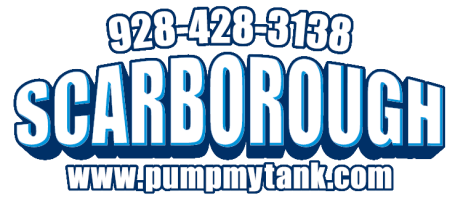Septic Tanks
When To Pump Your Septic Tank
Your septic tank must be pumped regularly. For our customers this happens automatically and at different intervals. We can help you determine this by evaluating several factors, including:
- The physical size/volume of your tank
- The number of people it supports
- The frequency of showers, laundry, flushing, etc.
- How much inorganic material is introduced
- The design and condition of your leaching field
- The type of soil in the area of your leaching field.
Please read the sections below for more detailed information.
About Your Septic System
Today's septic system customers are fully aware that their septic system represents one of the many ways they interface directly with the environment. They view the septic system, in modern terms, as an appliance. It performs a service as a part of the total comfort system of their homes and businesses. They understand that responsible decisions with regard to the care and maintenance of their septic system will have a positive impact on precious ground water, and on the economic plans they have for their families and businesses as well. This page provides information to help our customers make those decisions. Please read it carefully and save this link as a reference.
An Overview
Your septic system, when compared to urban and suburban living areas, functions as a mini sewer system, and as a mini waste treatment plant. All household waste is disposed to the septic system.
The termination point of your septic system is the environment. What you put into your septic system and how you choose to maintain it are important.
Your septic system is buried in the ground and consists of some piping, a watertight tank and a leaching field.
The septic tank was first introduced in England about 1900. It organically decomposes waste matter through bacterial action. The bacteria required to do the work enter the tank with normal household waste.
The leaching field consists of a network of perforated pipes laid just under the surface of the ground in a pattern on a bed of gravel. In a healthy system, clear water exits the septic tank and enters the perforated pipe network of the leaching field. It drains into the gravel, is absorbed by the surrounding soil and evaporates up into the air above the field. If anything other than clear water exits your septic tank into the leaching field piping, both the leaching field and the environment suffer.
What Can Go Wrong?
First, let's compare a healthy septic tank and a septic tank which is unhealthy.
A septic tank is a watertight box. When household waste enters this box, organic material floats to the surface where bacteria biologically convert it to liquid. We will call this the floating layer. Inorganic material and by-products of bacterial digestion do not float. They sink to the bottom of the tank and accumulate, creating a sludge layer. Water entering the tank occupies the space between the floating layer and the sludge layer. A large clear water layer is important in a healthy septic tank.
Trouble begins when material from either the floating layer or the sludge layer exits the septic tank to the leaching field. This will clog the field's piping system and bring harmful unprocessed waste in contact with ground soils and ground water.
Maintaining Your Septic System
A properly designed and maintained septic system is environmentally friendly and requires no major economic expense over the course of a lifetime. Septic system maintenance has two parts:
1 - Pump the sludge layer regularly!
The sludge layer that accumulates at the bottom of your tank MUST BE PUMPED OUT REGULARLY! This maintains the size of the water layer and eliminates any possibility of sludge entering and clogging your leaching field thus contaminating the environment. There is no additive or home remedy to reduce the sludge layer; regular pumping is the only option, and the alternative of replacing your leaching field is an enormous expense and inconvenience.
2 - Maintain proper bacteria levels!
The second part of septic system maintenance involves the bacteria necessary for digesting organic solids in the floating layer. Bacteria are very sensitive to many home care products and commonly used chemicals. We call these products and chemicals "Anti Septics". If the bacteria are killed or not present in sufficient numbers to digest the floating layer and maintain its size, these harmful solids will exit your tank, clog your leaching field and harm the environment.
Anti Septics include:
- DETERGENTS
- BLEACH
- POLISHES
- DRAIN OPENERS
- CLEANERS
- SOLVENTS
Today many ecologically-safe home care products are available, and we encourage our customers to exercise good judgment to insure the proper operation of their mini-treatment plant.
Common Myths and Taboos: Rural leaching of waste has been around for a long time and many myths exist.
Yeast - When added to your septic system, yeast merely provides a "fermentation" environment. Yeast does not provide bacteria.
Baking soda - Baking soda raises pH in your septic tank, but it provides no bacteria. In fact, raising the pH of your septic tank too much can actually harm the septic process.
We encourage you and all our customers to call us for factual information before trying home remedies.
Septic systems are tough mini treatment plants. Properly designed and installed, they function flawlessly. They are organic, natural and kind to the environment.
SEPTIC TANKS ARE NOT GARBAGE DISPOSALS!
They are not designed to accept cigarette butts, table scraps, kitchen grease, garbage disposal refuse, tampon tubes, harmful household products or harsh laundry detergents. Throwing these or other items into your system will reduce the effectiveness of the system and increase the cost and frequency of maintenance!
Copyright © 2023 Scarborough's Pumping
